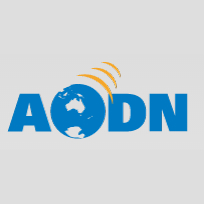Full description
Global fisheries landings supplied by a number of agencies (FAO/UN, CCAMLR, NAFO, ICES etc) are mapped to 30-min spatial cells based on the range/gradient of the reported taxon, the spatial access of the reporting country's fleets, and the original reporting area. This data is separated to industrial and non-industrial fishing and associated with types of fishing gears. Estimates of illegal, unreported and unallocated landings are included as are estimates of the weight of fisheries products discarded at sea. For appropriate records, spatial information from tuna regional management organisations and satellite-based vessel Automatic Identification System (AIS) were used to allow greater precision. Mapping the source of fisheries capture allows investigation of the impacts of fishing and the vulnerability of fishing (with its associate food security implications) to climate change impacts.This is the most current version of the Global Fisheries Landings dataset.
Lineage
Maintenance and Update Frequency: notPlannedNotes
CreditSAUP Sea Around Us project, University of British Columbia, Vancouver, Canada - records for FAO area 18 (Arctic) v2 1950-2014 (extrapolated to 2015) www.seaaroundus.org
The Australian Research Council (DP140101377)
CECAF Fishery Committee for the Eastern Central Atlantic Capture production 1970-2015 (FAO Regional Capture Fisheries Statistics v2017.2.0 Release date: 15 June 2017) www.fao.org/fishery/rfb/ecaf
Food and Agriculture Organisation (United Nations) Capture Production 1950-2014 (Release date: March 2016)
GFCM General Fisheries Commission for the Mediterranean Capture production 1970-2015 STATLANT 37A (Release date: Sept 2017) http://www.fao.org/gfcm/data/capture-production-statistics/en/
RECOFI capture production 1986-2014 (Release date: June 2016)
SEAFO Southeast Atlantic Capture Production 1975-2015 (FAO Regional Capture Fisheries Statistics v2017.2.0 Release date: 15 June 2017) www.seafo.org
CCAMLR Commission for the Conservation of Antarctic Marine Living Resources Statistical Bulletin 2017 Vol. 29 1970-2015 www.ccamlr.org
ICES International Committee for the Exploration of the Sea 1950-2015 & Historical data 1903-1949 www.ices.dk
NAFO Northwest Atlantic Fisheries Organisation Catch and Effort 21B 1960-2015 (Updated 1 June 2017) www.nafo.int
B.R. Mitchell, International Historical Statistics: The Americas 1750-1988, 2nd ed., Palgrave MacMillian, UK, 1993.
B.R. Mitchell, International Historical Statistics: Africa, Asia & Oceania, 1750-1993, 3rd ed., Palgrave Macmillan, UK, 1998.
GFW Global Fishing Watch AIS global data 2016 http://globalfishingwatch.org/
WCPFC Western & Central Pacific Fisheries Commission https://www.wcpfc.int/
IOTC Indian Ocean Tuna Commission http://www.iotc.org/
ICCAT International Commission for the Conservation of Atlantic Tunas https://www.iccat.int/en/
IAATC Inter-American Tropical Tuna Commission https://www.iattc.org/HomeENG.htm
CCSBT Commission for the Conservation of Southern Bluefin Tuna https://www.ccsbt.org/
Data time period: 1950-01-01 to 2015-12-31
text: westlimit=-180.00; southlimit=-90.00; eastlimit=180.00; northlimit=90.00
User Contributed Tags
Login to tag this record with meaningful keywords to make it easier to discover
(DATA CODE DEFINITIONS (gear/taxa/country codes and cell lat/lon references))
uri :
https://data.imas.utas.edu.au/attachments/5c4590d3-a45a-4d37-bf8b-ecd145cb356d/Codes.xlsx![]()
(MASTER INDEX FILE (global catch per fishing event) - INDUSTRIAL fishing)
uri :
https://data.imas.utas.edu.au/attachments/5c4590d3-a45a-4d37-bf8b-ecd145cb356d/IndexInd.csv![]()
(MASTER INDEX FILE (global catch per fishing event) - NON-INDUSTRIAL fishing)
uri :
https://data.imas.utas.edu.au/attachments/5c4590d3-a45a-4d37-bf8b-ecd145cb356d/IndexNInd.csv![]()
(Global Fisheries Catch Data V4.0: INDUSTRIAL fishing 1950-1954 [direct download 520MB])
uri :
https://data.imas.utas.edu.au/attachments/5c4590d3-a45a-4d37-bf8b-ecd145cb356d/CatchInd1950_1954.csv![]()
(Global Fisheries Catch Data V4.0: INDUSTRIAL fishing 1955-1959 [direct download 706MB])
uri :
https://data.imas.utas.edu.au/attachments/5c4590d3-a45a-4d37-bf8b-ecd145cb356d/CatchInd1955_1959.csv![]()
(Global Fisheries Catch Data V4.0: INDUSTRIAL fishing 1960-1964 [direct download 868MB])
uri :
https://data.imas.utas.edu.au/attachments/5c4590d3-a45a-4d37-bf8b-ecd145cb356d/CatchInd1960_1964.csv![]()
(Global Fisheries Catch Data V4.0: INDUSTRIAL fishing 1965-1969 [direct download 1.15GB])
uri :
https://data.imas.utas.edu.au/attachments/5c4590d3-a45a-4d37-bf8b-ecd145cb356d/CatchInd1965_1969.csv![]()
(Global Fisheries Catch Data V4.0: INDUSTRIAL fishing 1970-1974 [direct download 1.60GB])
uri :
https://data.imas.utas.edu.au/attachments/5c4590d3-a45a-4d37-bf8b-ecd145cb356d/CatchInd1970_1974.csv![]()
(Global Fisheries Catch Data V4.0: INDUSTRIAL fishing 1975-1979 [direct download 1.82GB])
uri :
https://data.imas.utas.edu.au/attachments/5c4590d3-a45a-4d37-bf8b-ecd145cb356d/CatchInd1975_1979.csv![]()
(Global Fisheries Catch Data V4.0: INDUSTRIAL fishing 1980-1984 [direct download 1.84GB])
uri :
https://data.imas.utas.edu.au/attachments/5c4590d3-a45a-4d37-bf8b-ecd145cb356d/CatchInd1980_1984.csv![]()
(Global Fisheries Catch Data V4.0: INDUSTRIAL fishing 1985-1989 [direct download 1.80GB])
uri :
https://data.imas.utas.edu.au/attachments/5c4590d3-a45a-4d37-bf8b-ecd145cb356d/CatchInd1985_1989.csv![]()
(Global Fisheries Catch Data V4.0: INDUSTRIAL fishing 1990-1994 [direct download 2.03GB])
uri :
https://data.imas.utas.edu.au/attachments/5c4590d3-a45a-4d37-bf8b-ecd145cb356d/CatchInd1990_1994.csv![]()
(Global Fisheries Catch Data V4.0: INDUSTRIAL fishing 1995-1999 [direct download 2.37GB])
uri :
https://data.imas.utas.edu.au/attachments/5c4590d3-a45a-4d37-bf8b-ecd145cb356d/CatchInd1995_1999.csv![]()
(Global Fisheries Catch Data V4.0: INDUSTRIAL fishing 2000-2004 [direct download 2.58GB])
uri :
https://data.imas.utas.edu.au/attachments/5c4590d3-a45a-4d37-bf8b-ecd145cb356d/CatchInd2000_2004.csv![]()
(Global Fisheries Catch Data V4.0: INDUSTRIAL fishing 2005-2009 [direct download 2.68GB])
uri :
https://data.imas.utas.edu.au/attachments/5c4590d3-a45a-4d37-bf8b-ecd145cb356d/CatchInd2005_2009.csv![]()
(Global Fisheries Catch Data V4.0: INDUSTRIAL fishing 2010-2014 [direct download 2.90GB])
uri :
https://data.imas.utas.edu.au/attachments/5c4590d3-a45a-4d37-bf8b-ecd145cb356d/CatchInd2010_2014.csv![]()
(Global Fisheries Catch Data V4.0: INDUSTRIAL fishing 2015 [direct download 257MB])
uri :
https://data.imas.utas.edu.au/attachments/5c4590d3-a45a-4d37-bf8b-ecd145cb356d/CatchInd2015_2015.csv![]()
(Global Fisheries Catch Data V4.0: NON-INDUSTRIAL (other) fishing 1950-1954 [direct download 151MB])
(Global Fisheries Catch Data V4.0: NON-INDUSTRIAL (other) fishing 1955-1959 [direct download 147MB])
(Global Fisheries Catch Data V4.0: NON-INDUSTRIAL (other) fishing 1960-1964 [direct download 149MB])
(Global Fisheries Catch Data V4.0: NON-INDUSTRIAL (other) fishing 1965-1969 [direct download 195MB])
(Global Fisheries Catch Data V4.0: NON-INDUSTRIAL (other) fishing 1970-1974 [direct download 202MB])
(Global Fisheries Catch Data V4.0: NON-INDUSTRIAL (other) fishing 1975-1979 [direct download 250MB])
(Global Fisheries Catch Data V4.0: NON-INDUSTRIAL (other) fishing 1980-1984 [direct download 251MB])
(Global Fisheries Catch Data V4.0: NON-INDUSTRIAL (other) fishing 1985-1989 [direct download 280MB])
(Global Fisheries Catch Data V4.0: NON-INDUSTRIAL (other) fishing 1990-1994 [direct download 279MB])
(Global Fisheries Catch Data V4.0: NON-INDUSTRIAL (other) fishing 1995-1999 [direct download 301MB])
(Global Fisheries Catch Data V4.0: NON-INDUSTRIAL (other) fishing 2000-2004 [direct download 318MB])
(Global Fisheries Catch Data V4.0: NON-INDUSTRIAL (other) fishing 2005-2009 [direct download 344MB])
(Global Fisheries Catch Data V4.0: NON-INDUSTRIAL (other) fishing 2010-2014 [direct download 351MB])
(Global Fisheries Catch Data V4.0: NON-INDUSTRIAL (other) fishing 2015 [direct download 71MB])
MAP - Global fisheries landings for 2015 (imas:Catch2015)
uri :
https://geoserver.imas.utas.edu.au/geoserver/wms![]()
(View and download this data through the interactive IMAS Data Portal.)
uri :
https://data.imas.utas.edu.au/portal/search?uuid=5c4590d3-a45a-4d37-bf8b-ecd145cb356d![]()
- global : 5c4590d3-a45a-4d37-bf8b-ecd145cb356d
- DOI : 10.25959/5C522CADBEA37

- DOI : 10.25959/5C521EC4BEA36

- global : ffb04265-eb2a-4eea-943f-ef4cd2dd9531


